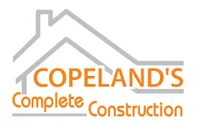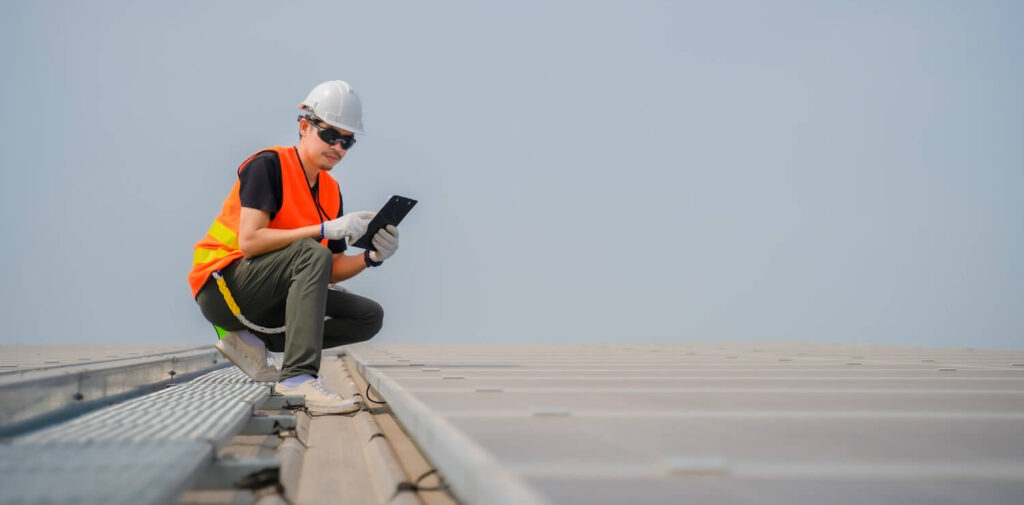For any business owner or property manager, the roof overhead is more than just a covering; it’s a critical shield protecting valuable assets, ensuring operational continuity, and safeguarding the comfort and productivity of occupants. While often overlooked until a problem arises, a commercial roof is a complex system susceptible to the relentless forces of nature, wear and tear, and even improper installation. Neglecting its upkeep can lead to significant financial burdens, operational disruptions, and even legal liabilities. This is where the seemingly simple act of regular roof inspections emerges as a powerful, proactive strategy for saving your business substantial money in the long run.
The Hidden Costs of Neglect: A Ticking Time Bomb
Imagine the scenario: a small leak starts unnoticed in a flat commercial roof. Over time, this seemingly minor issue allows water to seep into the insulation, weakening the structural deck, and fostering mold growth. Eventually, the ceiling tiles begin to stain and sag, and the musty odor becomes pervasive. By the time the problem becomes undeniably apparent, the initial small repair has morphed into a costly and disruptive overhaul involving structural repairs, insulation replacement, mold remediation, and interior finishing.
This scenario, unfortunately, is not uncommon. The costs associated with neglecting commercial roof maintenance extend far beyond the obvious expense of emergency repairs. These hidden costs can silently erode your bottom line:
Accelerated Deterioration and Premature Replacement
Regular inspections identify minor issues like loose seams, ponding water, or damaged flashing early on. Addressing these promptly prevents them from escalating into major structural problems that necessitate premature and expensive roof replacement. A well-maintained roof can significantly outlast a neglected one, spreading the initial investment over a longer period and reducing lifecycle costs.
Energy Inefficiency
A damaged or poorly maintained roof can compromise the building’s insulation and reflectivity. Leaks allow conditioned air (heating or cooling) to escape, forcing HVAC systems to work harder and consume more energy. This translates directly into higher utility bills, a continuous drain on your operational budget. Regular inspections ensure the roof’s integrity, maintain its energy efficiency, and reduce these ongoing costs.
Damage to Interior Assets
Leaks, even small ones, can damage inventory, equipment, furniture, and electronic systems. The cost of replacing or repairing these assets can be substantial and often exceeds the cost of proactive roof maintenance. Furthermore, water damage can disrupt operations, leading to lost productivity and revenue.
Prevent Mold and Mildew Growth
Moisture intrusion creates an ideal environment for mold and mildew to thrive. Beyond the unpleasant odors and unsightly stains, mold poses serious health risks to occupants, potentially leading to respiratory problems and allergies. Remediation of mold infestations can be expensive and time-consuming, often requiring specialized services and temporary business closures.
Business Interruption and Lost Revenue
Significant roof failures, whether due to leaks, structural collapse, or the need for extensive repairs, can force businesses to temporarily shut down or relocate operations. The resulting loss of productivity, sales, and customer goodwill can have a severe financial impact. Proactive maintenance minimizes the risk of such disruptive events.
Liability Issues
A poorly maintained roof can pose safety hazards to employees, customers, and visitors. Falling debris or slip-and-fall accidents due to leaks can lead to liability claims and legal expenses, further impacting your bottom line and reputation.
Voided Warranties
Many commercial roofing systems come with manufacturer warranties that often require adherence to specific maintenance schedules and inspection protocols. Neglecting these requirements can void the warranty, leaving you solely responsible for any future repairs or replacements that might otherwise have been covered.
Reduced Property Value
A visibly neglected roof detracts from the overall appearance and perceived value of your commercial property. This can be a significant disadvantage if you ever decide to sell or lease the property. A well-maintained roof, on the other hand, enhances its marketability and potential return on investment.
The Proactive Power of Inspections: A Penny Saved is More Than a Penny Earned
Regular commercial roof inspections are the cornerstone of a cost-effective maintenance strategy. These proactive assessments, conducted by qualified professionals, identify potential problems in their early stages, allowing for timely and less expensive repairs. Think of it as preventative medicine for your building’s most critical protective layer.
Here’s how routine system maintenance inspections directly translate into significant cost savings:
Early Problem Detection and Minor Repairs
Trained inspectors can identify subtle signs of deterioration, such as small cracks, loose fasteners, minor membrane damage, blocked drains, or early stages of ponding water. Addressing these issues promptly with minor repairs is significantly cheaper than dealing with the extensive damage they can cause if left unaddressed. A small sealant repair today can prevent a major leak and structural damage tomorrow.
Extending Roof Lifespan
By identifying and addressing minor issues, regular maintenance prevents accelerated deterioration and helps your roof system reach its full expected lifespan. This delays the need for costly roof replacement, representing a substantial long-term saving.
Maintaining Energy Efficiency
Inspections ensure that the roof’s insulation is intact, the membrane is in good condition to reflect sunlight, and there are no air leaks around penetrations. This helps maintain optimal energy efficiency, leading to lower utility bills month after month.
Preventing Interior Damage
Early leak detection prevents water from damaging interior finishes, equipment, and inventory. This saves on repair or replacement costs and avoids disruptions to business operations.
Mitigating Mold Growth
Identifying and addressing moisture intrusion early on prevents the conditions necessary for mold and mildew growth, saving on expensive and disruptive remediation efforts and protecting the health of building occupants.
Avoiding Business Interruption
Proactive maintenance minimizes the risk of sudden and catastrophic roof failures that can force business closures. Maintaining operational continuity translates directly into sustained revenue and prevents costly downtime.
Preserving Warranty Coverage
Adhering to recommended inspection schedules and maintenance protocols ensures that your roof warranty remains valid, providing financial protection against potential future issues covered under the warranty terms.
Maintaining Property Value
A well-maintained roof enhances the curb appeal and overall value of your commercial property, making it a more attractive asset for potential buyers or tenants.
Budgeting and Planning
Regular inspections provide valuable insights into the roof’s condition, allowing you to anticipate future maintenance needs and budget accordingly. This avoids unexpected and potentially crippling repair costs.
What to Expect During a Commercial Roof Inspection: A Detailed Look
A comprehensive commercial roof inspection typically involves a thorough examination of all roof components and related systems. Here’s a breakdown of what a qualified inspector will typically assess:
- Roofing Membrane: For flat roofs, inspectors will look for blisters, wrinkles, cracks, punctures, tears, and open seams in the membrane. For sloped roofs, they will examine shingles, tiles, or metal panels for damage, missing pieces, or signs of wear and tear.
- Flashing: This crucial component seals transitions and penetrations (around chimneys, vents, HVAC units, etc.). Inspectors will check for damage, corrosion, loose or missing pieces, and proper sealing.
- Sealing and Caulking: Areas where different materials meet or where penetrations occur are sealed with caulking. Inspectors will look for cracks, deterioration, and gaps in these seals.
- Drainage System: Proper drainage is essential to prevent ponding water. Inspectors will check gutters, downspouts, scuppers, and internal drains for blockages, damage, and proper flow.
- Roof Deck: While not always visually accessible, inspectors may look for signs of deck weakness or damage from the underside or by probing the surface.
- Insulation: Inspectors may assess the condition of visible insulation for water damage or compression, which can impact energy efficiency.
- Fasteners: For mechanically attached systems, inspectors will check for loose, corroded, or missing fasteners.
- Walkways and Traffic Areas: If the roof has designated walkways, inspectors will assess their condition for wear and tear or damage.
- Penetrations and Equipment: Inspectors will examine the seals and condition of all roof penetrations, including HVAC units, vents, skylights, and piping.
- Vegetation Growth: The presence of moss, algae, or weeds can trap moisture and damage the roof membrane. Inspectors will note any such growth.
- Overall Cleanliness: Excessive debris accumulation can impede drainage and trap moisture. Inspectors may comment on the general cleanliness of the roof.
Following the inspection, you should receive a detailed report outlining the findings, including any identified issues, their severity, and recommended repairs or maintenance actions. The report may also include photographic documentation.
Establishing a Cost-Saving Inspection Schedule: Consistency is Key
The frequency of commercial roof inspections depends on several factors, including the age and type of the roof, the local climate, and the building’s usage. However, as a general guideline:
- New Roofs: An initial inspection is recommended within the first year to identify any installation errors or early signs of issues.
- Established Roofs: Most commercial roofs benefit from at least annual inspections, ideally in the spring and fall. Spring inspections can identify damage caused by winter weather, while fall inspections prepare the roof for the upcoming winter.
- Roofs in Harsh Climates: Regions with extreme temperatures, heavy rainfall, high winds, or significant snowfall may require more frequent inspections.
- After Severe Weather Events: It’s crucial to schedule an inspection after any major storm, such as heavy rain, hail, or high winds, even if no immediate damage is apparent.
- Before and After Major Tenant Changes or Equipment Installations: These events can sometimes inadvertently cause roof damage.
Selecting the Right Inspection Partner: Expertise Matters
Choosing a qualified and experienced commercial roofing contractor for your inspections is essential. Look for a company that:
- Is Licensed and Insured: This protects you from liability in case of accidents during the inspection process.
- Has a Proven Track Record: Check online reviews and ask for references from other commercial clients.
- Employs Certified Inspectors: Look for certifications from reputable industry organizations.
- Provides Detailed and Comprehensive Reports: The report should clearly outline findings, recommendations, and associated costs.
- Offers Transparent Pricing: Understand the cost of the inspection and any potential follow-up services.
- Prioritizes Communication: They should be responsive to your questions and concerns.
The Bottom Line: Proactive Inspections, Tangible Savings
In conclusion, commercial roof maintenance, particularly regular and thorough inspections, is not an optional expense; it’s a strategic investment that yields significant financial returns. By proactively identifying and addressing minor issues before they escalate, businesses can avoid costly emergency repairs, extend the lifespan of their roof, improve energy efficiency, protect valuable assets, mitigate liability risks, and maintain business continuity. Embracing a culture of preventative maintenance through routine inspections is a smart business decision that directly contributes to a healthier bottom line and a more secure future for your organization. Don’t wait for the drip, drip, drip to turn into a financial deluge – invest in the proactive power of commercial roof inspections with Copeland’s Complete Construction today.

